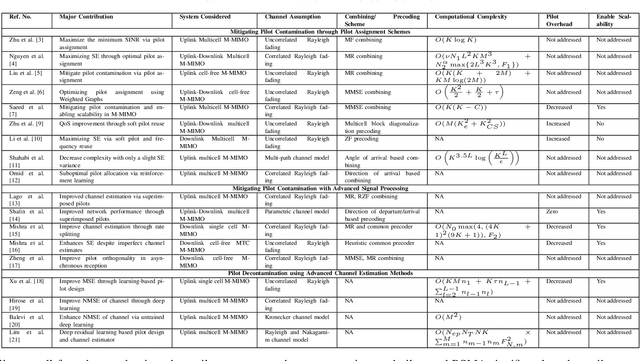Muhammad Kamran Saeed
OSI Stack Redesign for Quantum Networks: Requirements, Technologies, Challenges, and Future Directions
Jun 13, 2025Abstract:Quantum communication is poised to become a foundational element of next-generation networking, offering transformative capabilities in security, entanglement-based connectivity, and computational offloading. However, the classical OSI model-designed for deterministic and error-tolerant systems-cannot support quantum-specific phenomena such as coherence fragility, probabilistic entanglement, and the no-cloning theorem. This paper provides a comprehensive survey and proposes an architectural redesign of the OSI model for quantum networks in the context of 7G. We introduce a Quantum-Converged OSI stack by extending the classical model with Layer 0 (Quantum Substrate) and Layer 8 (Cognitive Intent), supporting entanglement, teleportation, and semantic orchestration via LLMs and QML. Each layer is redefined to incorporate quantum mechanisms such as enhanced MAC protocols, fidelity-aware routing, and twin-based applications. This survey consolidates over 150 research works from IEEE, ACM, MDPI, arXiv, and Web of Science (2018-2025), classifying them by OSI layer, enabling technologies such as QKD, QEC, PQC, and RIS, and use cases such as satellite QKD, UAV swarms, and quantum IoT. A taxonomy of cross-layer enablers-such as hybrid quantum-classical control, metadata-driven orchestration, and blockchain-integrated quantum trust-is provided, along with simulation tools including NetSquid, QuNetSim, and QuISP. We present several domain-specific applications, including quantum healthcare telemetry, entangled vehicular networks, and satellite mesh overlays. An evaluation framework is proposed based on entropy throughput, coherence latency, and entanglement fidelity. Key future directions include programmable quantum stacks, digital twins, and AI-defined QNet agents, laying the groundwork for a scalable, intelligent, and quantum-compliant OSI framework for 7G and beyond.
Pilot Contamination in Massive MIMO Systems: Challenges and Future Prospects
Apr 30, 2024

Abstract:Massive multiple input multiple output (M-MIMO) technology plays a pivotal role in fifth-generation (5G) and beyond communication systems, offering a wide range of benefits, from increased spectral efficiency (SE) to enhanced energy efficiency and higher reliability. However, these advantages are contingent upon precise channel state information (CSI) availability at the base station (BS). Ensuring precise CSI is challenging due to the constrained size of the coherence interval and the resulting limitations on pilot sequence length. Therefore, reusing pilot sequences in adjacent cells introduces pilot contamination, hindering SE enhancement. This paper reviews recent advancements and addresses research challenges in mitigating pilot contamination and improving channel estimation, categorizing the existing research into three broader categories: pilot assignment schemes, advanced signal processing methods, and advanced channel estimation techniques. Salient representative pilot mitigation/assignment techniques are analyzed and compared in each category. Lastly, possible future research directions are discussed.
Smart Pilot Assignment for IoT in Massive MIMO Systems: A Path Towards Scalable IoT Infrastructure
Apr 16, 2024Abstract:5G sets the foundation for an era of creativity with its faster speeds, increased data throughput, reduced latency, and enhanced IoT connectivity, all enabled by Massive MIMO (M-MIMO) technology. M-MIMO boosts network efficiency and enhances user experience by employing intelligent user scheduling. This paper presents a user scheduling scheme and pilot assignment strategy designed for IoT devices, emphasizing mitigating pilot contamination, a key obstacle to improving spectral efficiency (SE) and system scalability in M-MIMO networks. We utilize a user clustering-based pilot allocation scheme to boost IoT device scalability in M-MIMO systems. Additionally, our smart pilot allocation minimizes interference and enhances SE by treating pilot assignment as a graph coloring problem, optimizing it through integer linear programming (ILP). Recognizing the computational complexity of ILP, we introduced a binary search-based heuristic predicated on interference threshold to expedite the computation, while maintaining a near-optimal solution. The simulation results show a significant decrease in the required pilot overhead (about 17%), and substantial enhancement in SE (about 8-14%).
Mitigating Pilot Contamination and Enabling IoT Scalability in Massive MIMO Systems
Oct 05, 2023Abstract:Massive MIMO is expected to play an important role in the development of 5G networks. This paper addresses the issue of pilot contamination and scalability in massive MIMO systems. The current practice of reusing orthogonal pilot sequences in adjacent cells leads to difficulty in differentiating incoming inter- and intra-cell pilot sequences. One possible solution is to increase the number of orthogonal pilot sequences, which results in dedicating more space of coherence block to pilot transmission than data transmission. This, in turn, also hinders the scalability of massive MIMO systems, particularly in accommodating a large number of IoT devices within a cell. To overcome these challenges, this paper devises an innovative pilot allocation scheme based on the data transfer patterns of IoT devices. The scheme assigns orthogonal pilot sequences to clusters of devices instead of individual devices, allowing multiple devices to utilize the same pilot for periodically transmitting data. Moreover, we formulate the pilot assignment problem as a graph coloring problem and use the max k-cut graph partitioning approach to overcome the pilot contamination in a multicell massive MIMO system. The proposed scheme significantly improves the spectral efficiency and enables the scalability of massive MIMO systems; for instance, by using ten orthogonal pilot sequences, we are able to accommodate 200 devices with only a 12.5% omission rate.
 Add to Chrome
Add to Chrome Add to Firefox
Add to Firefox Add to Edge
Add to Edge